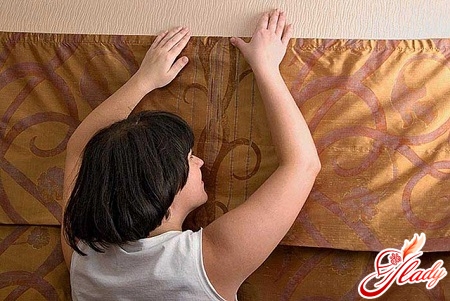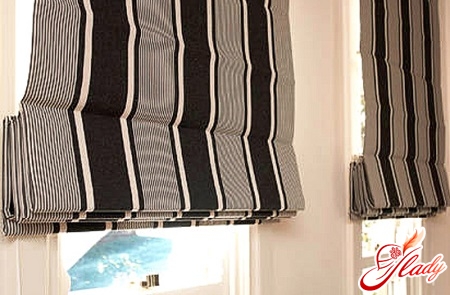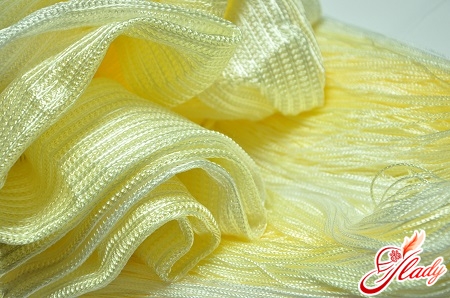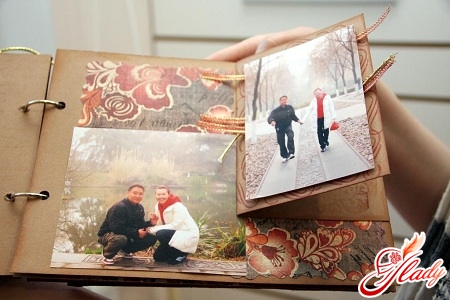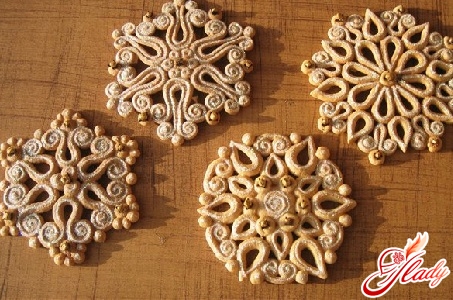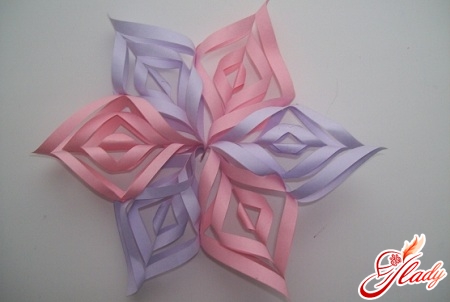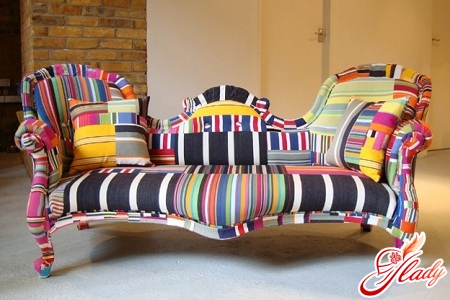 Hand made is in fashion these days.The phrase "handmade" alone makes any item exclusive, desirable and fashionable. That's why many of us start to urgently master various handicrafts in order to be "in the know" and have the opportunity to show off our handmade masterpieces when the opportunity arises. Let's talk about the technique of patchwork sewing, which in a foreign manner is called the tricky word "patchwork". What is it, where did patchwork come from and is it difficult to master this fashionable technique?
Hand made is in fashion these days.The phrase "handmade" alone makes any item exclusive, desirable and fashionable. That's why many of us start to urgently master various handicrafts in order to be "in the know" and have the opportunity to show off our handmade masterpieces when the opportunity arises. Let's talk about the technique of patchwork sewing, which in a foreign manner is called the tricky word "patchwork". What is it, where did patchwork come from and is it difficult to master this fashionable technique?
History of patchwork technique
Literally translated, the name of the patchwork techniquesounds like "patchwork sewing". This technique has no homeland and can be considered an international handicraft, known more than three thousand years ago. Patchwork, textile mosaic or something similar existed in all countries and among all peoples. And patchwork itself is a patchwork technique of England and America. It was there that patchwork turned from a household necessity into a type of decorative and applied art. As, in general, one can guess, patchwork sewing did not appear at all from a craving for beauty, but rather from the necessary economy. Although, the craving for beauty played its role here. When unusually bright and colorful Indian fabrics appeared in England in the sixteenth century, they were available only to wealthy Englishmen, and products made from these fabrics were considered a sign of prosperity. However, after the government ban on the sale of Indian chintz, it became scarce and unusually expensive even for wealthy citizens. Therefore, thrifty housewives found a way to use chintz without waste, inventing to sew fabric scraps into whole colorful canvases, and to use patterns cut out of fabric as decorative appliqués. Together with settlers from England, patchwork sewing came to the New World, where it gradually turned into a real art. And even today, patchwork blankets or bedspreads made using the patchwork technique are an obligatory attribute of a traditional American interior. We must pay tribute to American needlewomen. They not only preserved the traditions of sewing from scraps of fabric, but also turned this utilitarian activity (the result of forced thriftiness) into a real decorative and applied art, having developed various technologies for making patchwork products and invented many patterns. So patchwork can safely be considered a national type of needlework of England and America, as well as one of the most unusual and most complex types of decorative and applied art.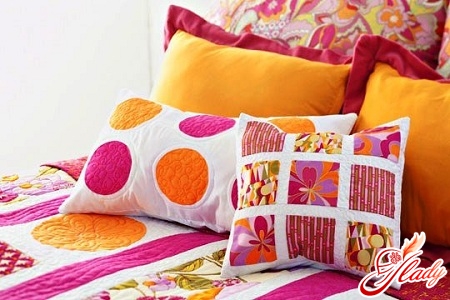
What can I do with the patchwork technique?
Anything that can be decorated with textiles,can be decorated using the patchwork technique. Initially and most traditionally, patchwork was used for bedding textiles: blankets, bedspreads, pillows, throws and other bedding were first made and then decorated using scraps of fabric. Table textiles also could not do without the use of this technique: towels, tablecloths, napkins, potholders made of scraps were no less popular than traditional blankets. And then there was more. When patchwork went beyond utilitarian use, its use became almost universal. In interior decor, patchwork sewing (and even its imitation) began to be used to make furniture covers, window curtains, rugs, wall panels. It became fashionable to make clothes (vest, skirts) and accessories (bags, for example) using the patchwork technique. And today patchwork is one of the directions of art design. Patchwork patterns are used to decorate the interiors of public spaces, in the publishing industry, in furniture production and as a way to decorate art objects, from mobile phone cases to painting public transport. So Anglo-American patchwork, which has become a real art, is gaining more and more fans. And if men are mainly engaged in imitation patchwork, transferring traditional patterns to canvas, plaster, metal and wood, then women remain true to tradition. Therefore, it is women who join the ranks of real patchwork masters working with fabrics, thread and needle.
What is necessary for needlework in the patchwork technique
On the one hand, everything is very simple here:patchwork requires scraps and something to connect the scraps with. On the other hand, it depends on how you look at it. For a real (high-quality and highly artistic) patchwork, any scraps will not do. For a product made using the patchwork technique, a sketch is first drawn, and then fabrics are selected that match the color, texture and pattern. However, it is believed that absolutely any fabric is suitable for this technique: new and old, natural and synthetic. Moreover, before work, it is recommended to wash, starch and iron any fabric. These procedures will renew old fabrics, and new ones will protect the scraps from shrinkage and fading in the finished product. As for the quality of fabrics, cotton fabrics, as well as natural wool, linen and silk are considered the most convenient for patchwork. However, synthetic or semi-synthetic fabrics are also valued for their variety of colors and the ability to select patches "tone on tone" or "color on color". Cotton is the easiest to work with: it is easy to wash, easy to cut, easy to sew. Moreover, cotton fabrics are used to make not only excellent napkins, towels, potholders and pillowcases, but also exquisite lightweight patchwork blankets. Dense fabrics (drape, denim or suit fabric) will be an excellent material for a patchwork blanket, rug, bedspread, panel and traditional blanket. But silk is more suitable for clothing made using the patchwork technique, for crazy patchwork and for artistic panels. By the way, craftswomen often successfully combine not only fabrics of different colors, but also patches of different textures, but of the same type (chintz and calico, corduroy and denim), as well as fabrics of different types (silk and chintz, linen and wool). If the products require a base on which the patchwork fabric is attached, then any dense fabrics, synthetic padding or batting are most often used as such. In addition to the fabrics themselves, additional materials such as threads, decorative braid and cords, ribbons, and piping are also needed for handicrafts. And as tools, you will have to prepare good sharp scissors, pins, needles for handwork and a sewing machine for stitching the parts.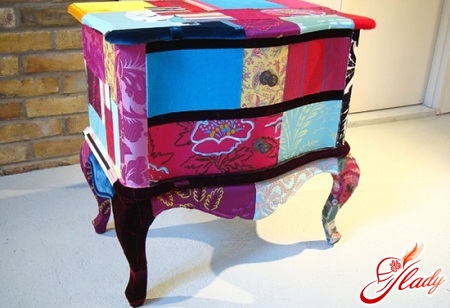
Fundamentals of quilting
Surprisingly, it is also highly artistic.patchwork, and quite simple products are made in the same technique. And it's all about a beautiful pattern and a harmonious combination of fabrics. For this technique, patterns, as a rule, are made up of elements of the same shape (squares, diamonds, triangles, etc.) and size, that is, patches. The elements are cut out using templates made of cardboard or thick paper. Experienced craftswomen make templates with two contours: the outer contour serves as a border for the cutting line, and the inner one - for the seam line when joining the patches. That is, the distance between the outer and inner contours of the templates is nothing more than ordinary seam allowances. Of course, you can do without such intricate templates, but their use guarantees a finished product without distortions, swelling and bulges. By the way, these are the disadvantages most often encountered by beginners mastering the basics of this technique. So, the patchwork algorithm looks like this:
- Rags of soft tissues are folded together and sewn along the inner contour;
- Dense grafts are laid on the lining and stitched "butt". In this case, the parts are cut out without allowances for seams.
Patchwork patterns
For the patchwork technique, usevarious patterns made up of geometric figures (patches). Traditional patchwork allows creating patterns from absolutely identical in shape and size elements or from different figures of the same size, or identical elements of different sizes. However, all elements must be strictly ordered and form an ornament (symmetrical pattern). Asymmetrical patterns are used for crazy patchwork, when patches are sewn in a random order, without observing a certain sequence and geometric sequence. However, this type of patchwork is not very suitable for making a traditional blanket, rather - for fashion accessories or abstract panels. Most often, additional decorations are also used for crazy techniques: fringe, beads, braid, ribbons, sequins, etc., etc. In a word, this is just crazy patchwork sewing, absolutely free form. However, the traditional patchwork technique is characterized by the use of simple geometric shapes. Such figures as a square, triangle, hexagon or pentagon can be folded into unusually beautiful patterns, especially if you skillfully combine the colors and texture of the fabrics. In addition, in traditional patchwork there is a technique of sewing from patchwork blocks, when a semblance of one large motley element is first sewn from square rags, and only then a chic pattern is folded from such large details. So, for example, large rectangles or diamonds can be made from squares, or you can sew long stripes from them. There are so many pattern options for the patchwork technique that each pattern, each technique and each motif require a separate discussion. And when the opportunity arises, we will definitely talk about this in more detail. But to begin with, you just need to imbue yourself with the atmosphere of Old England, imagine your future creation, made using the patchwork technique, and draw a sketch of it. And then all that remains is to select fabrics and bring your idea to life! And it doesn't matter whether you start making a patchwork blanket right away or stop at a smaller product. What matters is your desire and your mood. Because the main thing is to want it. We recommend reading:




